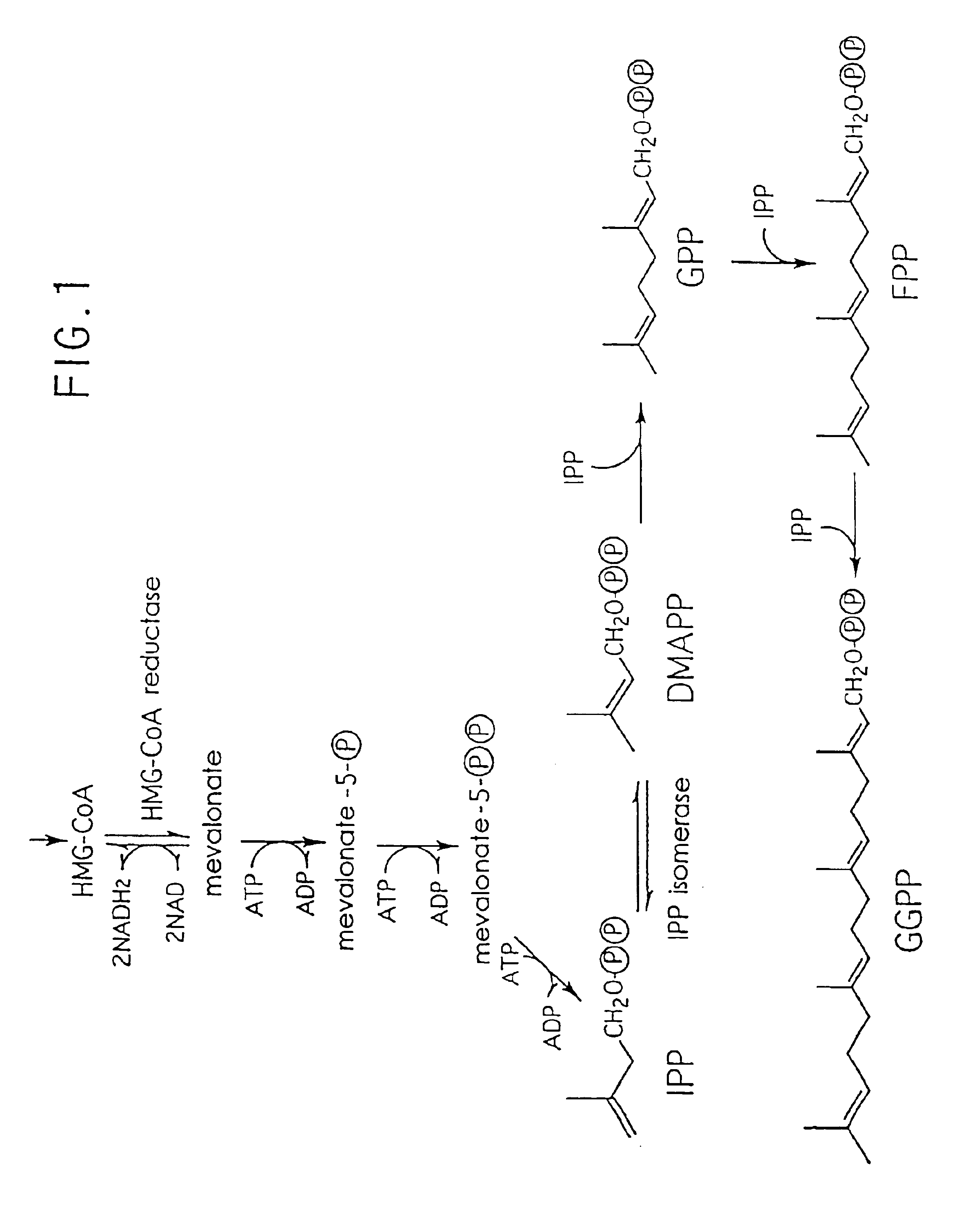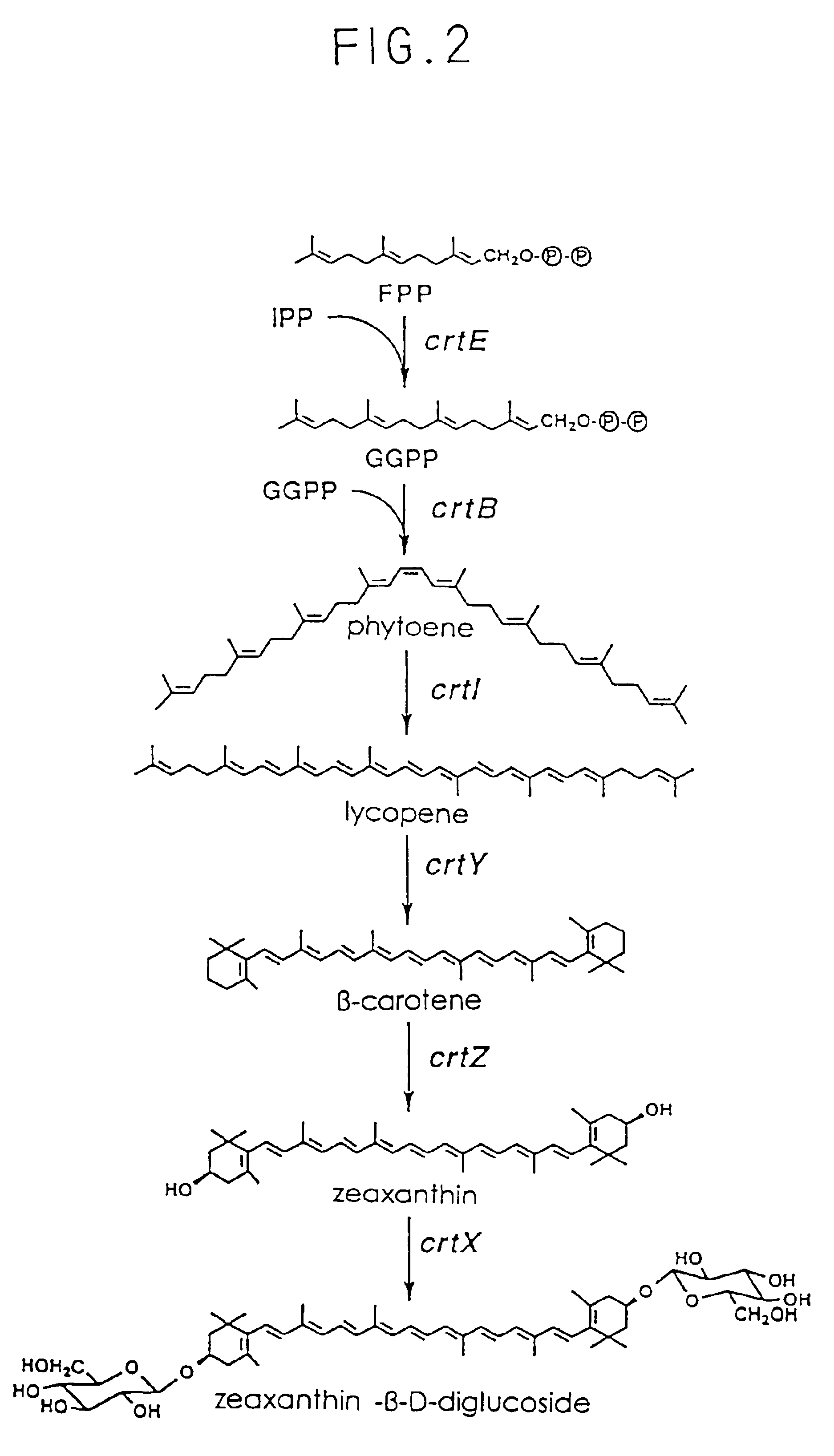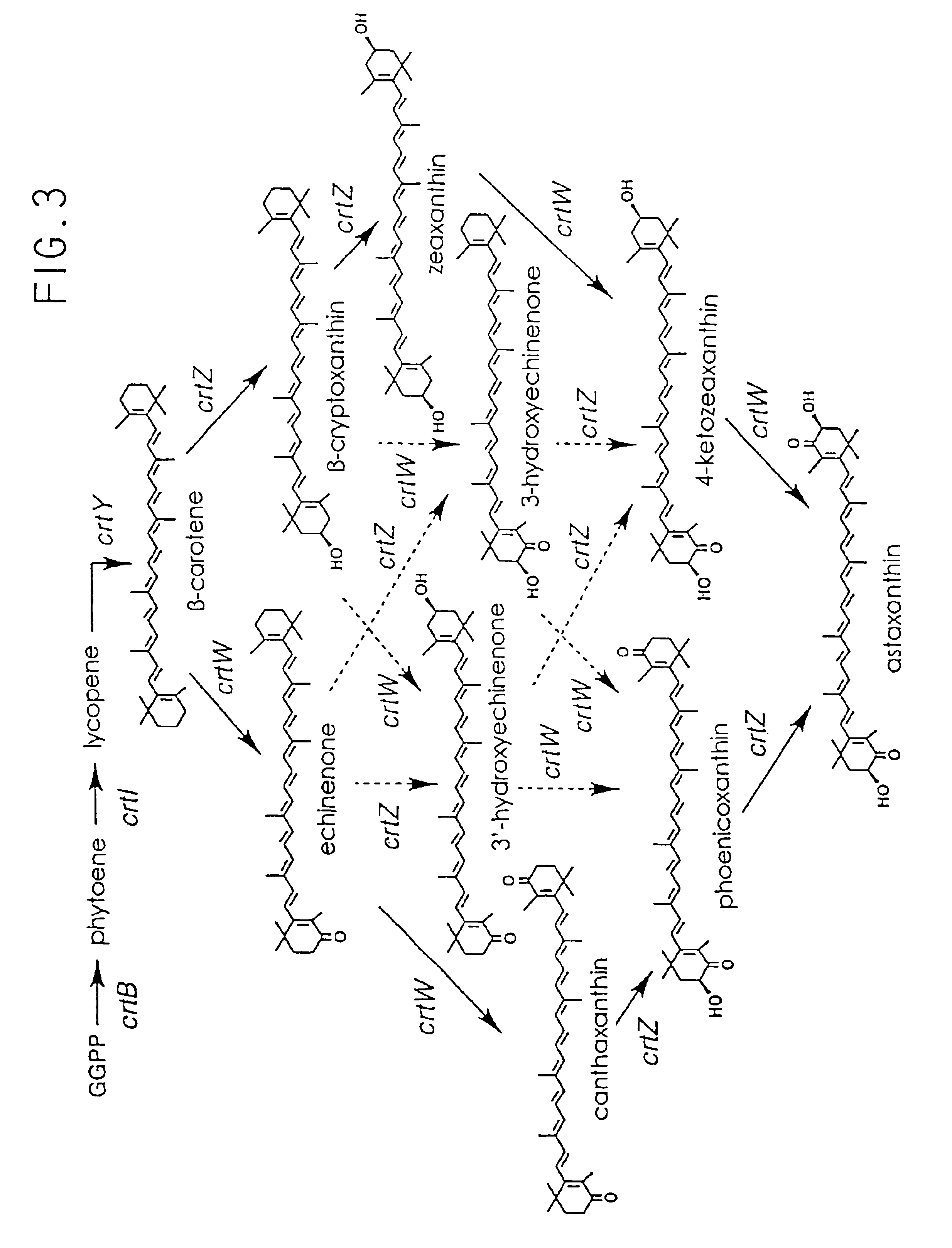Methods of producing carotenoids using DNA molecules encoding isopentenyl pyrophosphate isomerase
a technology of isoenzyme and carotenoids, applied in the field of dna chain, can solve the problems of large amount of time and labor of technicians, inability to compete with the price of carotenoids produced by the conventional fermentation method and those produced by the organic synthesis method, etc., and achieve the effect of increasing the amount of carotenoids biosynthetically
- Summary
- Abstract
- Description
- Claims
- Application Information
AI Technical Summary
Benefits of technology
Problems solved by technology
Method used
Image
Examples
example 1
Biological Materials and Culture Conditions
Phaffia rhodozyma ATCC 24230 strain(Astaxanthin-producing yeast) registered at the American Type Culture Collection(ATCC) is used. YM media(yeast extract 0.3%, malt extract 0.3%, bactopeptone 0.5%, Glucose 1%) is used for Ph. rhodozyma. Haematococcus pluvialis, the astaxanthin-producing green alga, NIES-144 strain registered at the Global Environmental Forum is used. Ha. pluvialis is cultured at 20.degree. C. for about 4 days in basic culture media(yeast extract 0.2%, sodium acetate 0.12%, L-asparagin 0.04%, magnesium chloride hexahydrate 0.02%, ferrous sulfate heptahydrate 0.001%, calcium chloride dihydrate 0.002%) under 12 hr light(20 .mu.E / m.sup.2 s) / 12 hr dark condition. Furthermore, in order to induce astaxanthin synthesis in Ha. pluvialis, cyst formation, a kind of differentiation, has to be induced. To induce cyst formation, both acetic acid 45 mM and ferrous sulfate heptahydrate 450 .mu.M at final concentrations are added. Ha. pluvi...
example 2
Preparation of Whole RNA in Phaffia rhodozyma
Phaffia rhodozyma ATCC 24230 strain is cultured with shaking for approx. 24 hr at 20.degree. C. in 400 ml of YM media. When the turbidity of the media reached at OD600=0.4, the bacteria are collected and frozen in liquid nitrogen. The frozen bacteria are stored in the freezer at -80.degree. C. and used for preparing total RNA. After thawing the frozen bacteria in a tube on ice, the bacteria are suspended in 6 ml of ANE buffer(10 mM sodium acetate, 100 mM sodium chloride, 1 mM EDTA, pH 6.0). Glass beads are added to cover the surface of the bacteria layer. Then, 600 .mu.l of 10% SDS and 6 ml of phenol prewarmed at 65.degree. C. are added. The suspension is kept at 65.degree. C. for 5 minutes, and the tube is vortexed to crushed cell membranes at every 30 seconds. Then, the suspension is rapidly cooled down to room temperature and centrifuged for 10 minutes at 1,500.times.g at room temperature. Equal volume of phenol is added to the superna...
example 3
Preparation of Whole RNA in Haematococcus Pluvialis
Haematococcus pluvialis NIES-144 strain is cultured for approx. 4 days in 800 ml of the basic culture media under the condition of 20.degree. C., light intensity at 20 .mu.E / m.sup.2 s and 12 hr light / 12 hr dark cycle. Then, both acetic acid 45 mM and ferrous sulfate heptahydrate 450 .mu.M as final concentrations are added. The H. pluvialis in the media is cultured for approx. 12 hr at 20.degree. C. with light(125 .mu.E / m.sup.2 s). The bacteria are collected from the media, frozen in liquid nitrogen and crushed in the mortar to give powder. Then, three ml of ISOGEN-LS[Nippon Gene K.K.] is added to the powder and stand for 5 minutes. Then 0.8 ml of chloroform is added, and the solution is stirred vigorously for 15 seconds and stand at room temperature for 3 minutes. The solution is centrifuged for 15 minutes at 4.degree. C., 12,000.times.g, two ml of isopropanol is added to the supernatant and the supernatant is stood at room temperat...
PUM
| Property | Measurement | Unit |
|---|---|---|
| Weight | aaaaa | aaaaa |
| Weight | aaaaa | aaaaa |
| Weight | aaaaa | aaaaa |
Abstract
Description
Claims
Application Information
 Login to View More
Login to View More - R&D
- Intellectual Property
- Life Sciences
- Materials
- Tech Scout
- Unparalleled Data Quality
- Higher Quality Content
- 60% Fewer Hallucinations
Browse by: Latest US Patents, China's latest patents, Technical Efficacy Thesaurus, Application Domain, Technology Topic, Popular Technical Reports.
© 2025 PatSnap. All rights reserved.Legal|Privacy policy|Modern Slavery Act Transparency Statement|Sitemap|About US| Contact US: help@patsnap.com



